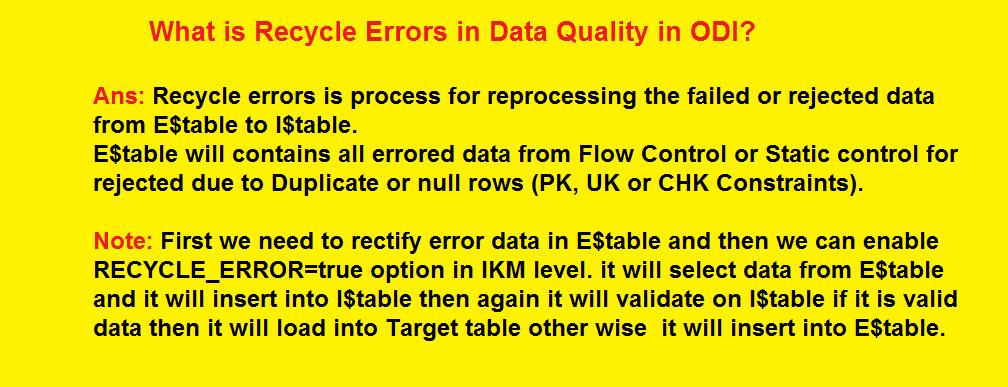By using below function you can get grand total
<?sum(//CF_AMT_CHILD[.!=''])?>
<?sum(//CF_AMT_CHILD[.!=''])?>
source_id_int_1 on the xla_transaction_entities table can be used to join from SLA to related transactions in the sub-ledgers.xla_entity_id_mappings which contains the mapping information.| APPLICATION_ID | APPLICATION_NAME | ENTITY_CODE | SOURCE_ID_COL_NAME_1 | TRANSACTION_ID_COL_NAME_1 | SOURCE_ID_COL_NAME_2 | TRANSACTION_ID_COL_NAME_2 | |
|---|---|---|---|---|---|---|---|
| 200 | Payables | AP_INVOICES | SOURCE_ID_INT_1 | INVOICE_ID | |||
| 200 | Payables | AP_PAYMENTS | SOURCE_ID_INT_1 | CHECK_ID | |||
| 275 | Projects | BUDGETS | SOURCE_ID_INT_1 | BUDGET_VERSION_ID | |||
| 275 | Projects | EXPENDITURES | SOURCE_ID_INT_1 | EXPENDITURE_ITEM_ID | |||
| 275 | Projects | REVENUE | SOURCE_ID_INT_1 | PROJECT_ID | SOURCE_ID_INT_2 | DRAFT_REVENUE_NUM | |
| 201 | Purchasing | PURCHASE_ORDER | SOURCE_ID_INT_1 | PO_HEADER_ID | |||
| 201 | Purchasing | REQUISITION | SOURCE_ID_INT_1 | REQ_ID | |||
| 222 | Receivables | RECEIPTS | SOURCE_ID_INT_1 | CASH_RECEIPT_ID | |||
| 222 | Receivables | TRANSACTIONS | SOURCE_ID_INT_1 | CUSTOMER_TRX_ID |
source_id_int_1 value related to the PROJECT_ID and a source_id_int_2 value related to the DRAFT_REVENUE_NUM.xla_entity_id_mappings helps take the guess work out of linking source transactions to the sub ledger tables.-- ##############################################################################-- SOURCE_ID_INT_1 MAPPINGS-- ############################################################################*/ -- source_id_int_1 mappings-- for a given application, find out what entity (e.g. AP_INVOICES) and column_name (e.g. INVOICE_ID)-- found via Application Diagnostics > Subledger Accounting > Setup Diagnostics > Xla Setup Diagnostics Diagnostics Script SELECT fa.application_id , fa.application_short_name app , fat.application_name , DECODE(fpi.status,'I','Licensed','S','Shared','N','Not Licensed') status , fpi.product_version , fpi.patch_level , xeim.entity_code , xeim.source_id_col_name_1 , xeim.transaction_id_col_name_1 , xeim.source_id_col_name_2 , xeim.transaction_id_col_name_2 , xeim.source_id_col_name_3 , xeim.transaction_id_col_name_3 , xeim.source_id_col_name_4 , xeim.transaction_id_col_name_4 FROM xla.xla_entity_id_mappings xeim JOIN applsys.fnd_application fa ON xeim.application_id = fa.application_id JOIN applsys.fnd_application_tl fat ON fa.application_id = fat.application_id LEFT JOIN applsys.fnd_product_installations fpi ON fpi.application_id = fa.application_id WHERE 1 = 1 AND xeim.source_id_col_name_1 IS NOT NULL-- AND fpi.status <> 'N' ORDER BY fat.application_name , xeim.entity_code;
SESS_NO
|
Internal number of the session
|
SESS_NAME
|
Name of the session
|
SCEN_VERSION
|
Current scenario version
|
CONTEXT_NAME
|
Name of the execution context
|
CONTEXT_CODE
|
Code of the execution context
|
AGENT_NAME
|
Name of the physical agent in charge of the execution
|
SESS_BEG
|
Date and time of the beginning of the session
|
USER_NAME
|
odi User running the session.
|


|
Logging Level
|
Information That Is
Logged
|
|
|
Level 0
|
No logging.
|
|
|
Level 1
|
Logs the SQL statement
issued from the client application. Also logs the following:
·
Physical Query Response Time — The time for a query to be processed in the
back-end database.
·
Number of physical queries — The number of queries that are processed by the
back-end database.
·
Cumulative time — The sum of time for all physical queries for a request
(that is, the sum of all back-end database processing times and DB-connect
times).
·
DB-Connect time — The time taken to connect to the back-end database.
·
Query cache processing — The time taken to process the logical query from the
cache.
·
Elapsed time — The time that has elapsed from when the logical query is
presented to the BI Server until the result is returned to the user. Elapsed
time can never be less than response time, because elapsed time takes into
account the small extra time between the logical query being presented to the
BI Server to the start of preparation of the query. In cases where this delta
time is negligible, the elapsed time equals the response time.
·
Response time — The time taken for the logical query to prepare, execute, and
fetch the last record. This matches the TOTAL_TIME_SEC that is logged in
usage tracking.
·
Compilation time — The time taken to compile the logical query.
·
For each query, logs the query status (success, failure, termination, or
timeout), and the user ID, session ID, and request ID.
|
|
|
Level 2
|
Logs everything logged
in Level 1.
Additionally, for each
query, logs the repository name, business model name, subject area name, SQL
statement issued against the physical database, queries issued against the
cache, number of rows returned from each query against a physical database
and from queries issued against the cache, and the number of rows returned to
the client application.
|
|
|
Level 3
|
Logs everything logged
in Level 2.
Additionally, adds a
log entry for the logical query plan, when a query that was supposed to seed
the cache was not inserted into the cache, when existing cache entries are
purged to make room for the current query, and when the attempt to update the
exact match hit detector fails.
Do not select this
level without the assistance of Oracle Support Services.
|
|
|
Level 4
|
Logs everything logged
in Level 3.
Additionally, logs the
query execution plan. Do not select this level without the assistance of
Oracle Support Services.
|
|
|
Level 5
|
Logs everything logged
in Level 4.
Additionally, logs
intermediate row counts at various points in the execution plan. Do not
select this level without the assistance of Oracle Support Services.
|
|
|
Level 6 and 7
|
Not used.
|
|

